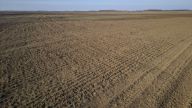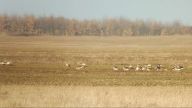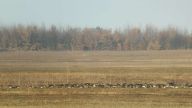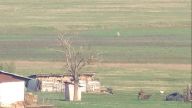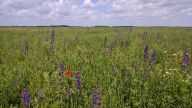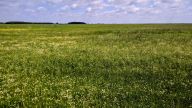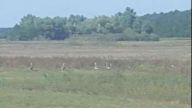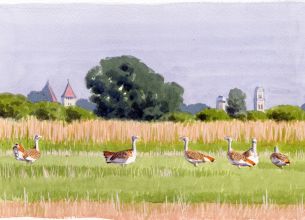The rehabilitation of the reed lake, a swamp that had become eutrophicated in the Culișer meadow, located in Salonta, Bihor county, has been carried out in the past 3 years within our project based on cross-border public-private partnership.
Talking with a Bustard-friendly Farmer

26 June 2020
Compensatory payments are provided from European funds to farmers who are willing to ensure the preservation of important habitats for this species.
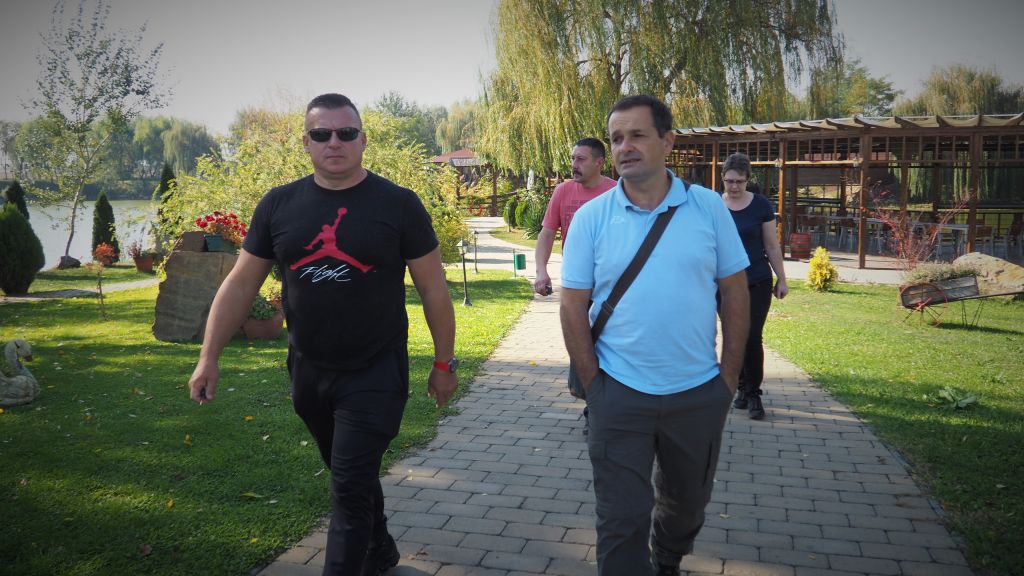
Since 2017, as part of the Romanian National Rural Development Programme 2014-2020, Measure 10 - Agri-Environment and Climate, there is now a whole new section dedicated exclusively to the Great Bustard: Package 11 - important agricultural lands for the Great Bustard (Otis tarda). For the adoption of environmentally-friendly practices, compensatory payments are granted from European funds. For example, for manual work carried out on grasslands or for converting arable land into grassland, one can receive between 269 EUR/ha/year, and respectively 255 EUR/ha/year.
Göndör Imre (47, from Salonta) is one of the first farmers in Romania who chose to manage a part of his agricultural lands in a Great Bustard-friendly manner. Together with my colleague Nagy Attila, I sat down with Imre last October and we chatted about the experience of the first year, what motivated him to apply for the programme and, naturally, about bustards.
Photo gallery: Göndör Imre's agricultural land converted into grassland provides food for bustards, as well as for other species | Salonta, Romania
* * *
Laura: Imre, how did you hear about Great Bustards? When have you seen them for the first time?
Imre: I've seen them ever since I can remember.
Laura: Here, in Salonta?
I: Yes, but back then they were so many more. During the communist regime, there were only grasslands at 2-3 km from Salonta. And the soil was bad, so people would not use it for agriculture. There were so many bustards, that you could see dozens of them. They would get closer to the town in wintertime, especially when it was foggy.
L: Being only a child, how did you know they were bustards?
I: The old folks told us. Many people lived in those old farmsteads. They knew even where the birds were nesting. In those times, agriculture was less invasive and the disturbance significantly smaller.
L: So, when did you last see bustards?
I: This morning. We’re harvesting the lucerne and I saw 11 of them this morning.
L: Do you know any other people in Salonta who applied for the Great Bustard agri-environment package?
I: I don’t know anyone who applied for the same package that I did. To tell you the truth, it’s not that easy to meet the requirements. And the money is not that much. If I hadn't owned the land, I wouldn't have done it. I have 90 hectares for which I get the standard financial support, and if I add the amount that I get from the programme it all ends up to 2,000 lei/ha, which is not bad. But it could be better. For instance, I had to sow again the grass seeds. I should find out if pea could work. [To Attila] You remember I had bustards on a plot of peas, I would sow green peas for them on 10 hectares. But that can’t be mowed or harvested before 1 July [the date after which the programme allows agricultural works to be carried out - Ed.]. But at least the bustards could feed on it. I even kept about two tons. [...] It’s very good for the bustards if the crops are not harvested before 1 July. Then, the lands are freed, the wheat is harvested and the birds can use those plots without being disturbed, but till 1 July there’s a lot of work that needs to be done...
Attila: And this is one of the problems...
I: I harvested the lucerne between 4-5 July. Until then, I’d see them there every day.
A: That makes all the difference - to have a few surviving chicks. The birds are clever - they show up instantly in places that are good for them, where there’s no disturbance. Especially if the vegetation is tall enough. They may even nest there. This is how conservation can be done. I'm not sure if I’ve already told you, but according to a study from Spain, a female Great Bustard can successfully raise just 1.4 chicks in her entire life, which is on average 10 years. Of course, some females can raise five chicks, but there are other four who cannot raise any. [...] This is why we need to step in here – so that the females may nest in places like yours, where they are not disturbed and where there’s no agricultural work [during the nesting period -Ed.].
L: Imre, what motivated you to apply in the first place?
I: I love this bird. To tell you the truth, I am very proud that here, in Salonta, I can show you bustards at any time. Others not really. This is one of my reasons. The other is because of the land, which isn’t very good. If it had been a plot near the town, where I keep my sheep or where I grow their fodder, I wouldn't have been able to comply with the requirements. That land is very productive and it generates a larger profit than the 250 Euros/ha. And here’s another problem - no one can tell you what's going to happen after the five years commitment. You may revert the arable land, but what about afterward? As much as I like bustards, I won’t be able to maintain the grassland without these payments.
L: How many lands have you got? How big are they?
I: Plots that I farm? This one is the largest [90 ha – Ed.] and I have others of 40-50 hectares. I farm a total of 650 hectares.
A: He owns a part of it and rents the other from other landowners.
I: Yes. My father and I own 350 hectares and we rent 300. I keep hoping that they will motivate us better financially. If I could include another plot of 38 hectares in the programme, there would be many bustards and they wouldn’t be disturbed at all - the plot is 700 m wide and 1.8 km long [Great Bustards do not tolerate humans at a distance smaller than 200-250 meters – Ed.]. They have always been there, near the border [with Hungary – Ed.], under the communist regime, too. And also where I have 100 hectares of grassland. [A: In Marțihaz]. I’ve got three plots there one next to the other - 20, 30, 40 ha each, and I will sow the same perennials in all of them. At first, it was a low-productivity grassland, then, there used to be rice paddies during Ceaușescu's dictatorship. And the bustards like the place because there are small ditches all around where they can hide. In May, during mating season, I could hear the males making their peculiar sounds, that’s how I knew they were there.
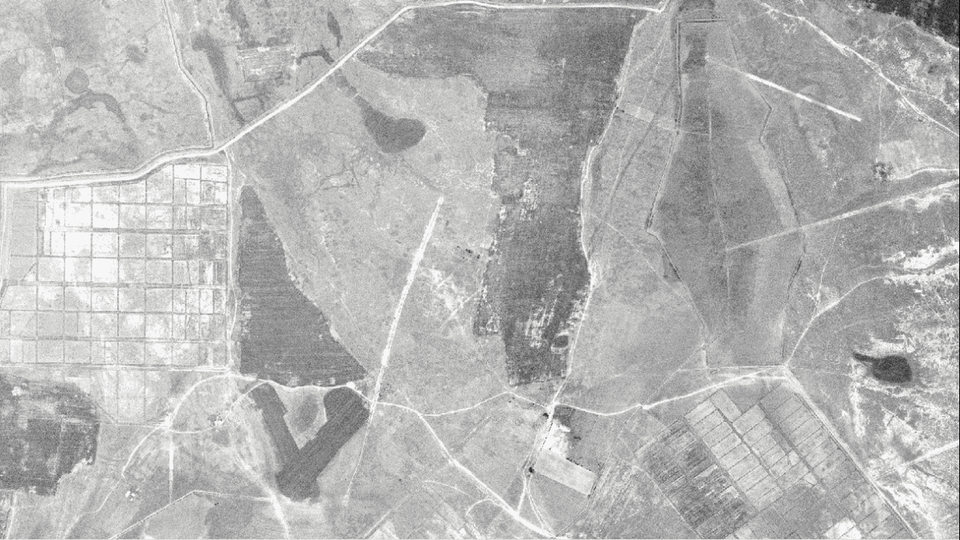
Interestingly, the rice paddy fields can be seen on the map of 1963 (on the left).
L: So you applied for the programme for the first time in 2018, right?
I: Yes, two years ago. I almost couldn’t believe there were such schemes available. And I made more inquiries. At some point, skeptically, the agricultural engineer told me he would give 500€ if I showed him Great Bustards. I said to him “Come with me!”. It was on a Saturday. We went out in the field. The birds were right there. We took photos, too. He didn’t believe it till then.
* * *
According to the Agency for Payments and Interventions in Agriculture (APIA), between 2018 and 2019, six farmers from Bihor County received compensation payments for Package 11 (The Great Bustard), as follows: one in Cefa (4.52 ha), one in Salonta (53.1 ha) and the others in Avram Iancu (108.97 ha).
List of the eligible areas in Romania
|
County |
Local Administrative Unit (LAU) |
2018-2020 |
2018-2020 |
|---|---|---|---|
|
Bihor |
Avram Iancu |
P32 |
P11 |
|
Bihor |
Cefa |
P32 |
P11 |
|
Bihor |
Ciumeghiu |
P32 |
P11 |
|
Bihor |
Mădăras |
P32 |
P11 |
|
Bihor |
Mun. Salonta |
P32 |
P11 |
|
Bihor |
Sânnicolau Român |
P32 |
P11 |
|
Timiș |
Beba Veche |
P11 |
P11 |
|
Timiș |
Comloșu Mare |
P32 |
P11 |
|
Timiș |
Dudeștii Vechi |
P11 |
P11 |
|
Timiș |
Or. Sânnicolau Mare |
P32 |
P11 |
|
Timiș |
Teremia Mare |
P32 |
P11 |
|
Timiș |
Vălcani |
P11 |
P11 |
- Abreviations: PG - permanent grasslands (used as pastures and/or meadows), AL - arable land, P32 - Red-footed Falcon Package, P11 - Great Bustard Package. // Source: APIA
-
- Edited by: Laura Turdean (Grupul Milvus)
- Photos and maps: Nagy Attila (Grupul Milvus)

